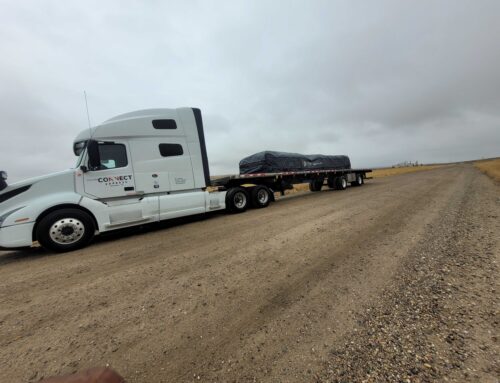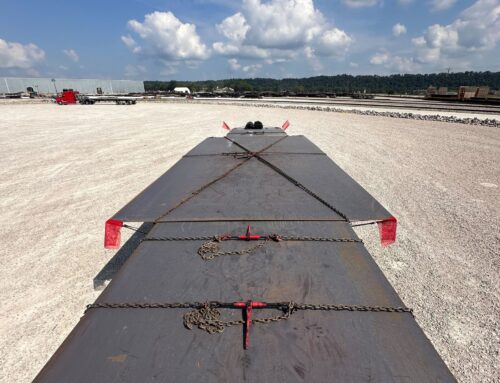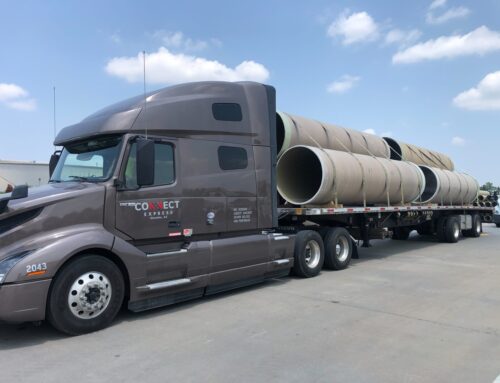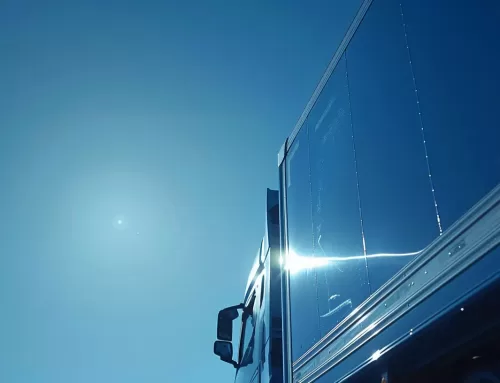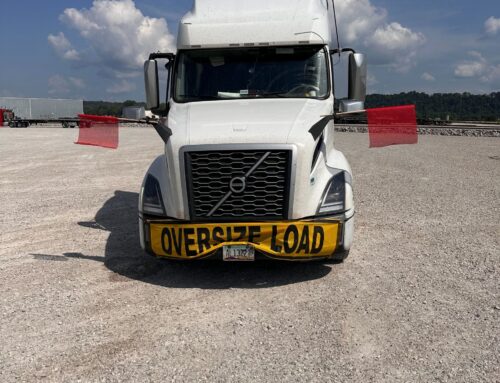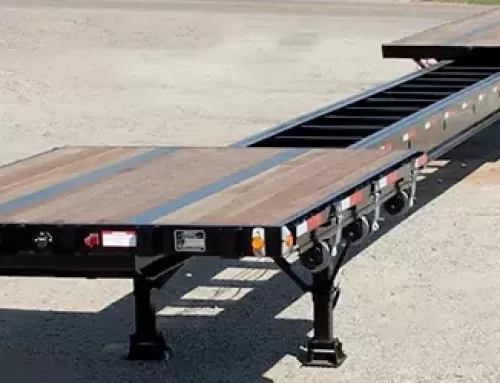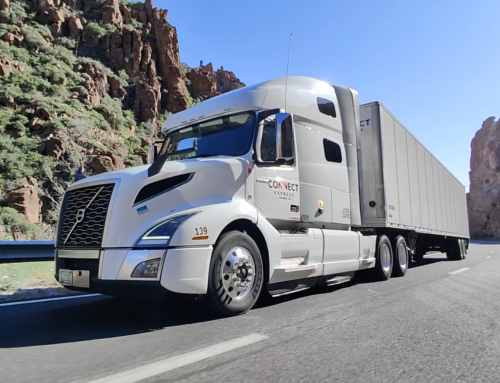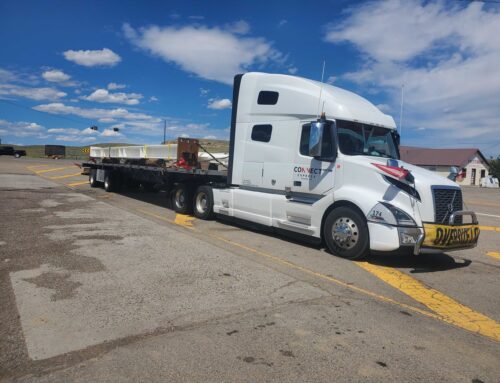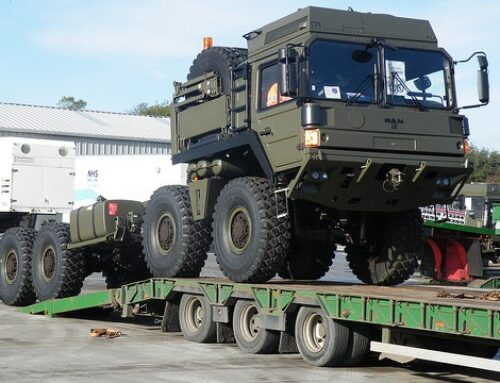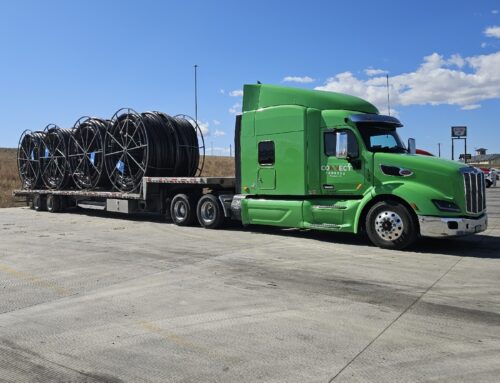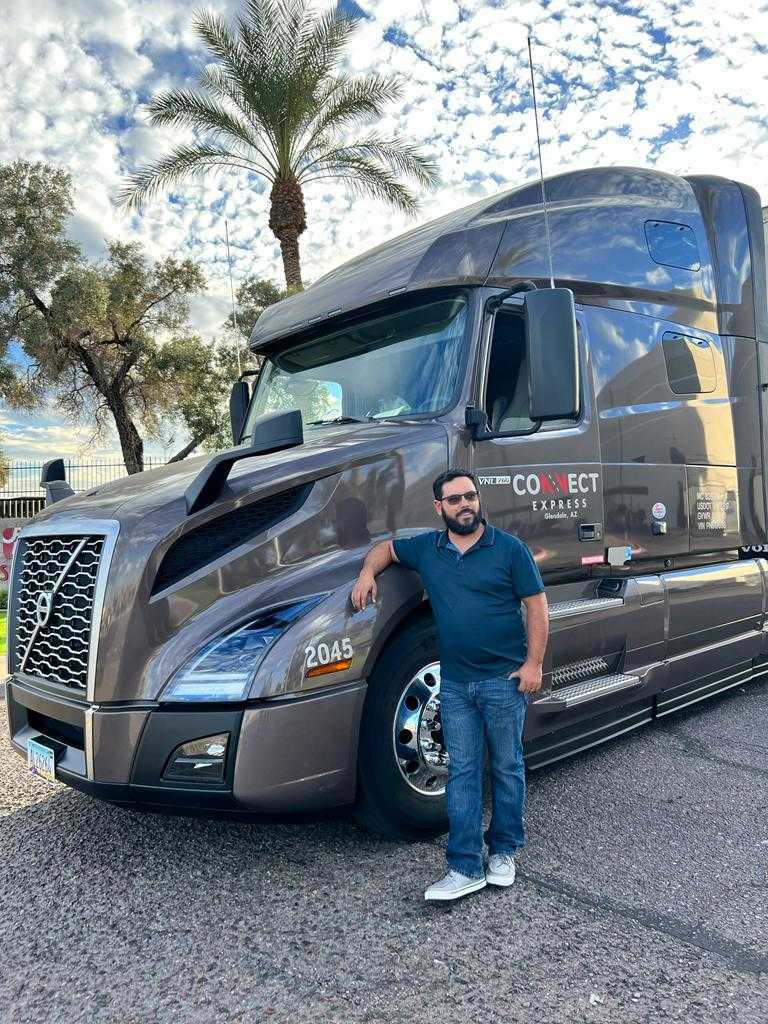
Best Practices – Towing Heavy Equipment
Transporting heavy machinery is a high-stakes endeavor fraught with potential hazards. Recalling the Hudson Valley incident, where an excavator dislodged itself from its trailer, underscores the dire consequences of complacency.
It’s a narrative we know too well. The repercussions of such events are not limited to the immediate chaos—an excavator toppling onto an unsuspecting motorist, for example, represents an immense liability, a tragic loss of life, and a stark reminder of the criticality of stringent towing protocols. After all, adhering to robust hauling protocols is not just a best practice but a cardinal rule that safeguards lives and preserves valuable assets.
Consulting Equipment Manuals
Consulting the manufacturer’s equipment manual is paramount to ascertain essential specifications such as weight, dimensions, and proper securing methods. This information becomes foundational as you plan the logistics, ensuring compliance with regional transportation regulations and safeguarding against the risks of overloading.
Ignorance of the details contained within equipment manuals can result in suboptimal securing techniques, potentially leading to catastrophic transport incidents. As such, ensuring ready access to these manuals throughout the towing process is a non-negotiable element of a thorough safety protocol.
Identifying Towing Specifications
Determining the appropriate towing specifications is a critical step for safe and compliant transport operations.
Exceeding a truck’s towing capacity can precipitate hazardous roadway incidents and costly penalties.
It is essential to consult the vehicle’s manual to ascertain its Gross Combined Weight Rating (GCWR), which informs on limitations for hauling payloads. Knowing these values upholds the integrity of the transportation process.
Adherence to towing specifications ensures the safety of the operator, the protection of the equipment, and compliance with regulatory standards. Operator awareness and conformity to these limits are fundamental for secure towing.
Protecting Machinery Specifics
Precise protection of equipment during transit is essential to prevent operational and structural damage.
- Assess and cover vulnerable components: Identify and shield sensitive areas such as control panels, glass, and painted surfaces, using protective barriers and padding.
- Disassemble when feasible: Remove and separately transport detachable parts that are susceptible to damage.
- Mark and follow manufacturer’s securement points: Adhere to designated load points for attaching tie-downs, as recommended within the equipment’s manual.
- Utilize correct protective materials: Apply edge protectors where straps or chains come into contact with the machinery to avert wear and tear.
- Confirm hydraulic detachment: Disconnect hydraulic systems to prevent pressure-related issues during transport.
- Secure loose elements: Ensure all additional pieces and accessories are tightly fastened or removed.
Equipment manuals typically provide detailed instructions for safeguarding machinery during haulage.
In maintaining equipment integrity, remember to document pre- and post-transport conditions, verifying no compromises in safety or operation.
Choosing Professional Operators

How to Choose the Right Flatbed Trucking Company Near You
Selecting highly qualified operators cannot be underestimated in the realm of heavy equipment towing. These professionals carry the responsibility for the safe transit of expensive and potentially hazardous loads over public roads. A proficient operator should not only possess the necessary qualifications, such as Commercial Driver’s License (CDL) and specialized training certificates, but also exhibit a proven safety record and keen situational awareness. Such diligence ensures adherence to designated performance standards, reducing risk and promoting confidence in every phase of equipment mobilization.
Assessing Operator Credentials
Vetting an operator’s qualifications is a foundational step in heavy machinery transport. Their expertise directly influences the safety and success of the towing operation. Without proper credentials, the risks of mishandling increase, potentially resulting in detrimental consequences.
In the evaluation process, one must scrutinize the operator’s licensure, including valid Commercial Driver’s License (CDL) status. It’s not merely about possessing a CDL, but ensuring it is appropriate for the class of heavy equipment being towed. Endorsements on their license also reveal specialized competencies.
Operators must present evidence of continuous training and skill updates. Certifications from recognized institutions corroborate an individual’s commitment to maintaining current industry standards. These documents are testimonials to an operator’s ability to handle complex towing scenarios.
An unblemished safety record is a non-negotiable criterion when assessing operator credentials. Inquiries into their history should highlight their adherence to safety protocols, and absence of preventable incidents. This track record is a vital indicator of their operational reliability.
Finally, testimonials and referrals offer qualitative insights into an operator’s performance. Endorsements from previous employers and clients attest to their proficiency and professional conduct. This feedback contributes to a comprehensive assessment of their capability to manage heavyweight tow operations.
The Impact of Experienced Drivers
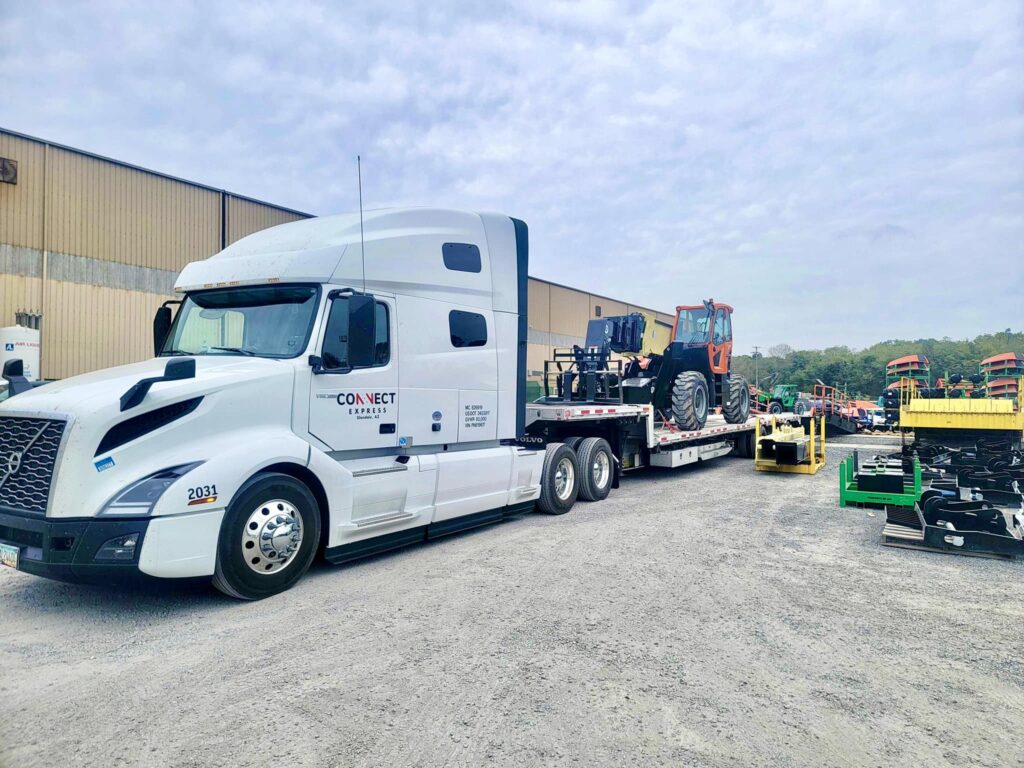
Seasoned drivers are the lynchpin of heavy haul transport.
Their extensive knowledge and well-honed skills prove invaluable on the road. Commanding a truck laden with heavy machinery calls for an intimate understanding of vehicle dynamics, predictive handling, and navigational acumen—qualities ingrained through years of hands-on experience. Seasoned drivers ensure not only transport efficiency but also immaculate compliance with stringent safety protocols.
A veteran’s instincts can be life-saving during unforeseen events.
Commandeering heavy loads demands – beyond just raw skill – keen judgment and nuanced understanding to adapt strategies when facing unforeseen road conditions. It’s this practiced decision-making that sets experienced operators apart, lending critical support during high-pressure transportation scenarios.
Drivers with deep-seated expertise add layers of safety and certainty.
Their precision in maneuvering cumbersome loads through complex infrastructure, often in challenging weather conditions, underscores the impact of experience. As transport complexities evolve, operators adept in the latest technologies and methodologies become indispensable assets to any fleet, further bolstering the industry’s push towards heightened safety and efficiency standards in heavy equipment towing.
Matching Towing Equipment
Selecting the proper combination of truck and trailer for your hauling task is not merely about convenience—it’s a critical safety measure. Assuring compatibility between these components, from weight distribution to dimensional specifications, is pivotal to maintaining overall control while on the move.
Discrepancies in equipment pairing can lead to precarious situations compromising stability and safety. It’s imperative that your trailer’s capacity coherently aligns with the towing truck’s performance capabilities to ensure a balanced and unswerving haul.
Selecting Suitable Trailers
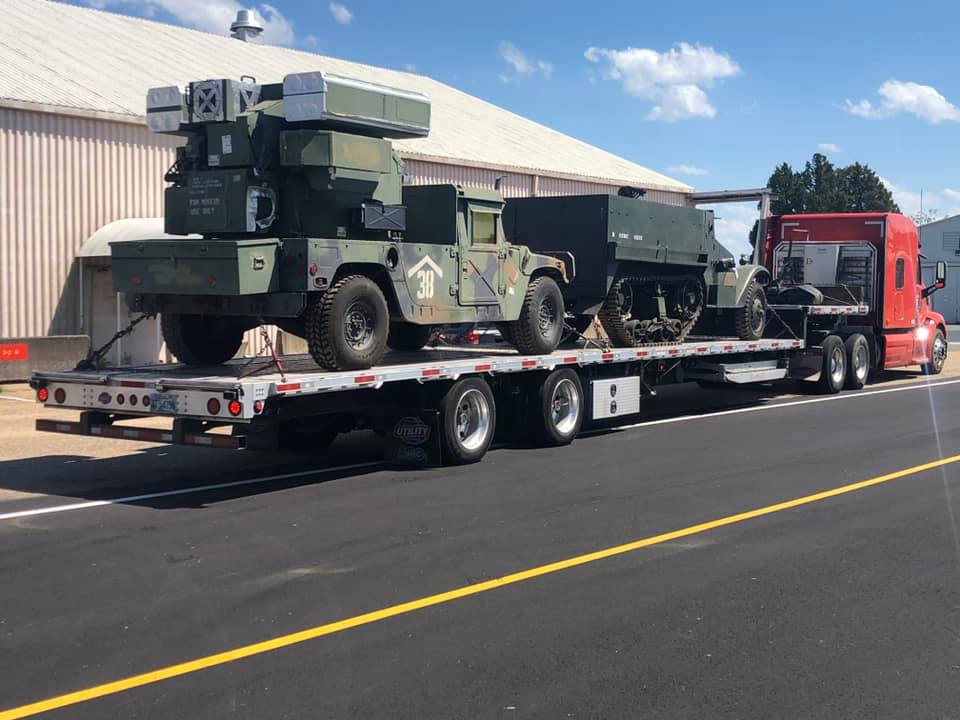
Selecting an appropriate trailer necessitates meticulous consideration of the equipment’s specifications and compliance needs. It is not merely about the size and capacity; it’s about precision in matching the trailer’s capabilities to the load’s demands, ensuring a harmonious and secure transport.
It’s imperative to comprehend the trailer’s load capacity. This must fall within legal limits and match the weight of your equipment, otherwise risking severe legal repercussions and compromised safety.
The configuration of the trailer is another paramount consideration, whether it’s a lowboy, step deck, or flatbed; each type caters to distinct dimensions and weight capacities of heavy equipment. Combining adequate trailer type with correct hitching equipment prevents transference of excessive stress onto the towing vehicle, maintaining the integrity of both the load and the transporter.
Ensuring that the chosen trailer is equipped with the requisite tie-down points and is compatible with the manufacturer’s recommendations for securing heavy machinery is also crucial. A careful assessment against potential routes’ clearance restrictions and the provision for necessary permits can preclude delays and infrastructural damage. In tandem with compliance, prioritizing “fit-for-purpose” ensures seamless and responsible heavy equipment transportation.
Understanding Truck Towing Capacities
Determining a truck’s towing capacity is the cornerstone of transport safety. It ensures that the tow vehicle can handle the substantial weight of the heavy equipment without compromising stability or legality.
In 2019, erroneous estimations of towing capacities resulted in multiple incidents of equipment failure and highway obstructions. Rigorous verification and matching of truck capacities against equipment weight are mandatory for mitigating such risks.
Consequently, the process involves not only understanding the gross weight of the load but also accounting for additional factors like vehicle weight, passengers, and fuel. Undeniably, every pound affects the cumulative stress placed upon the towing apparatus.
Moreover, consulting the Gross Combination Weight Rating (GCWR) and the vehicle’s curb weight offers precise towing limits. Adherence to this data safeguards against overload and ensures compliance with road safety regulations.
Towing beyond a truck’s capacity threatens both driver safety and roadway infrastructure. Strict adherence to towing specifications is a non-negotiable aspect of heavy equipment transportation.
Conducting Safety Protocols
Prior to initiating transit, a systematic approach to conducting safety protocols is paramount. This encompasses the rigorous inspection of not only the towing vehicle but also the integrity of the equipment being hauled. These preemptive measures forestall potential failures that could jeopardize safety and compliance throughout the journey.
Integrating safety protocols into a comprehensive checklist vastly improves oversight and accountability. This list should include verification of tie-down points, examination of the security of hydraulic systems, and the aptness of the towing setup. Utilizing a systematic checklist enables operators to approach the task with meticulous precision, thus averting oversights that can lead to accidents or violations.
Implementing DOT Securement Standards
Adhering to DOT securement standards is crucial for safe and compliant transportation of heavy equipment.
- Review Applicable Regulations: Familiarize yourself with DOT regulations specific to the type of cargo being hauled.
- Select Suitable Tie-Downs: Choose tie-downs with an appropriate Working Load Limit (WLL) that is at least 50% of the equipment’s weight.
- Inspect Securement Points: Identify and inspect the securement points on both the trailer and the equipment for integrity.
- Use Adequate Tie-Downs: Ensure enough tie-downs are used to meet or exceed the required WLL for the cargo’s total weight.
- Check Securement Before Transit: Perform a thorough examination of all tie-downs after loading and before commencing transport.
- Re-Inspect Periodically: Regularly re-inspect tie-downs during stops to address any adjustments or shifts in load.
Proper securement is a dynamic process, with ongoing inspection and adjustments required.
Ensuring that each tie-down adheres to DOT standards minimizes the risk of equipment damage or accidents en route.
Regular Inspection and Maintenance
Diligent inspection and regularly scheduled maintenance are indispensable for ensuring the operational integrity of your towing equipment.
- Periodically validate the condition of towing apparatus — chains, straps, and anchors.
- Ensure that hydraulic systems, brake lines, and electrical connections are functioning optimally.
- Examine tires, including spares, for proper inflation and signs of wear.
- Inspect braking systems for responsive performance and possible wear.
- Review all lighting systems for functionality, crucial for visibility and safety compliance.
- Regularly check oil levels and other vital fluids to maintain engine health.
Partial and full-system checks can preempt mechanical failures and safety breaches during transport operations.
Implementing a systematic approach to maintenance and repair not only prolongs equipment life but also minimizes downtime and enhances safety.
Connect Express LLC
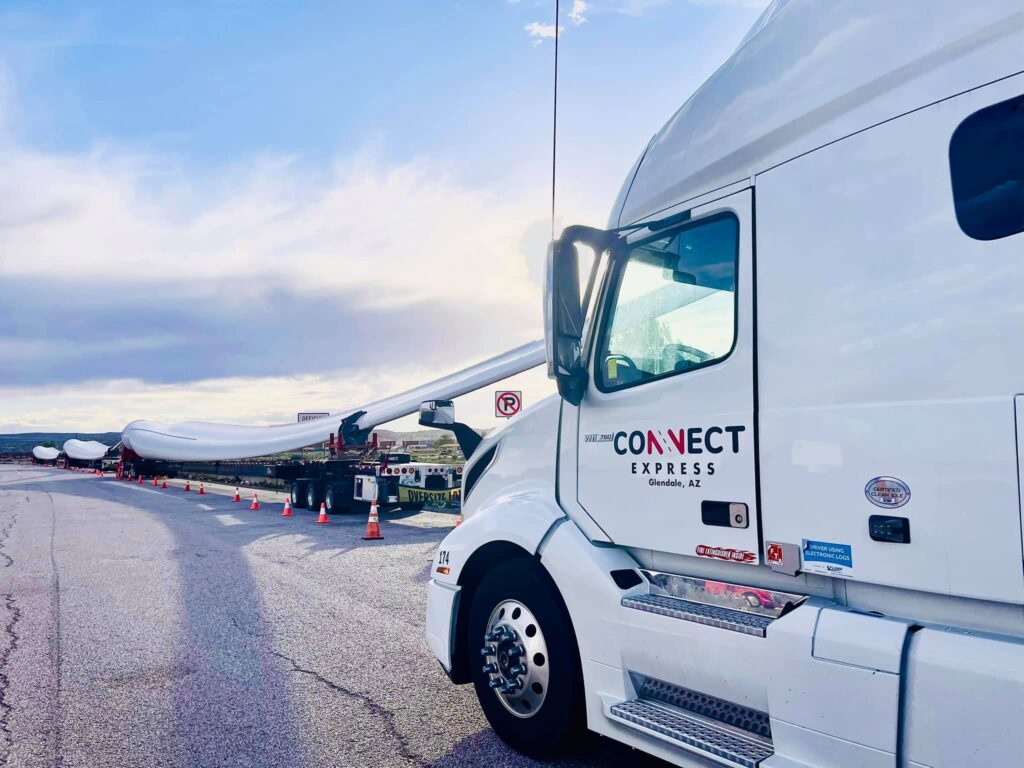
Connect Express LLC champions meticulous towing practices, underscoring the value of precision in heavy haulage.
Built on a foundation of industry expertise, the company meticulously plans every transport, ensuring all equipment secures safely. Their dedication to compliance with stringent DOT regulations mitigates the risk of on-road incidents, safeguarding the reputation of their clients.
Their fleet undergoes rigorous checks, exemplifying top-tier maintenance standards. By prioritizing equipment integrity, Connect Express LLC commits to operational excellence and transport reliability.
The cornerstone of Connect Express LLC’s philosophy is the unwavering commitment to safety and customer satisfaction. Their approach involves detailed route analyses and contingency planning, ensuring the heavyweight treasures they carry arrive without compromise, thereby embodying the epitome of heavy equipment towing excellence.
What is the proper tie down of equipment?
Proper tie down of equipment is crucial to ensure safe transportation and prevent any potential hazards or damage. It involves securing the equipment to the flatbed truck using appropriate methods and equipment to keep it stable and secure throughout the journey.
In 2016, the Federal Motor Carrier Safety Administration (FMCSA) implemented new regulations regarding the proper tie down of equipment. These regulations outline specific requirements and guidelines for securing different types of equipment, such as machinery, vehicles, and materials. Following these regulations is essential to maintain compliance and ensure the safety of both the equipment being transported and other road users.
One important aspect of proper tie down is determining the number and type of tie down devices required. This depends on factors such as the weight and dimensions of the equipment, the type of load securement method used, and the specific regulations governing the transportation of that particular equipment. It is crucial to use the right combination of chains, straps, binders, and other securement devices to provide adequate restraint and prevent any movement or shifting during transit.
Proper positioning of the tie downs is also essential. The tie down points should be strategically chosen on the equipment to distribute the securement forces evenly and prevent any concentrated stress on specific areas. It is important to ensure that the tie down points are structurally sound and capable of withstanding the forces applied during transportation.
Regular inspections and maintenance of the tie down equipment are necessary to ensure their effectiveness. Over time, tie downs may become worn out or damaged, compromising their ability to secure the equipment properly. Periodic inspections help identify any issues and allow for timely replacement or repair to maintain the integrity of the tie down system.
In conclusion, proper tie down of equipment is a critical aspect of flatbed trucking to ensure the safety of the equipment being transported, the truck driver, and other road users. Following the regulations set by the FMCSA, using the appropriate tie down devices, correctly positioning them, and conducting regular inspections are all crucial steps in achieving proper tie down of equipment.

